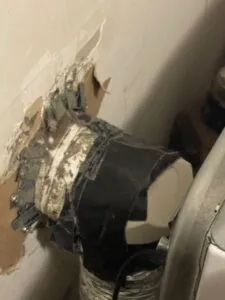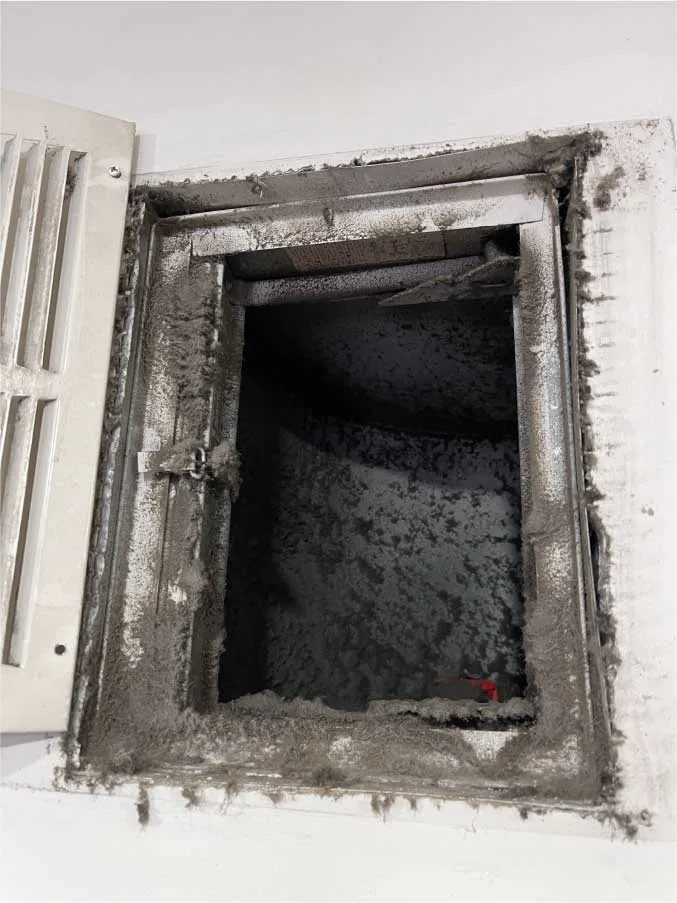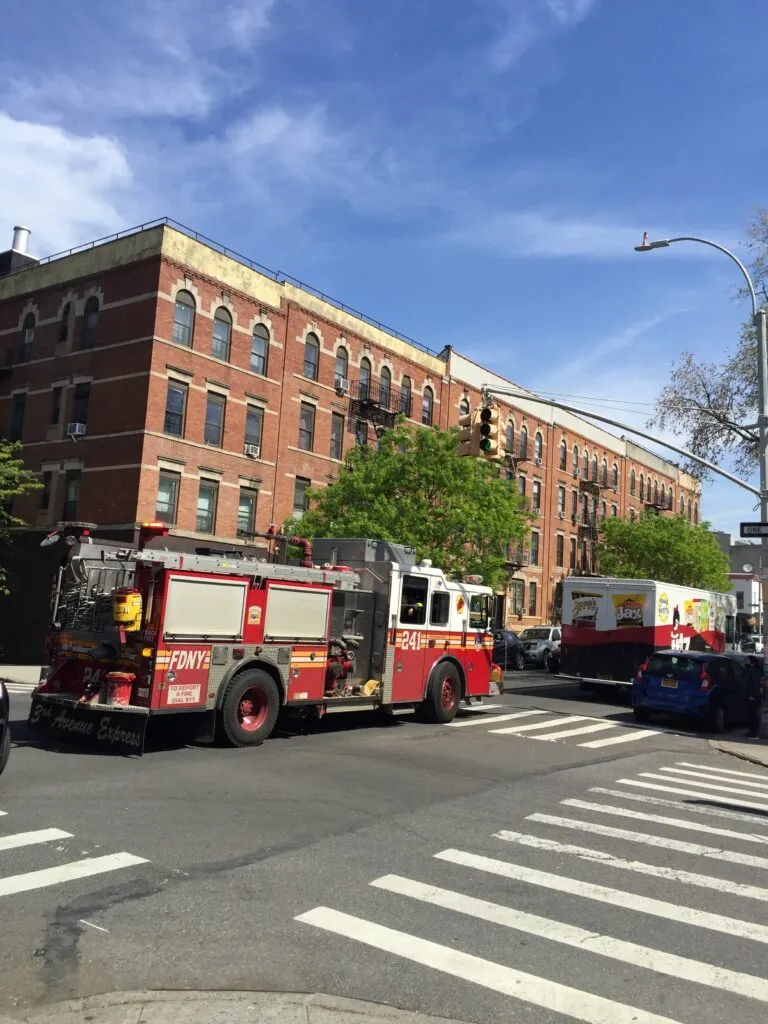Harmful Household Used Chemicals, Can Air Duct Cleaning Help to Get Them Out?
Harmful household used chemicals, how to get them out from your house, household used chemicals danger? Can air ducts cleaning help? We all want a clean house. house. Seeing dirt patches in different corners of your home is definitely not a pleasing view.
A dirty house can cause you embarrassment in public. So, to keep our indoor environment healthy and hygienic, we maintain a clean house. However, the cleaning process can be harmful to us.
Harmful household used chemicals are present in your house. We’ll discuss it later what are these chemicals, but it is important to understand that if these chemical products are improperly used or kept, they may result in health issues for you or your children.
The health issues can be mild, severe, or even life-threatening. According to the World Health Organization, about 3% of the global diseases are linked to poor indoor air quality caused by the discharge of toxic substances.
Harmful Household Used Chemicals in Air Ducts Trigger Breathing Issues
Asthma-related respiratory issues in both adults and children have become more prevalent recently. While there are several contributing factors to this rise, including family medical background, substandard housing, and an increase in outdoor contaminants, the usage of different chemicals in most homes has also been related to breathing issues.
What Effect Do These Cleaning Items Have on Health?
Several cleaning products or regular use items might irritate the eyes, throat, or cause headaches, other health issues, or even cancer. Dangerous chemicals are released from these products, and volatile organic chemicals (VOCs) are the most common type.
These household used chemicals can get discharged into our houses, and because they have no odor, you might not be able to detect their presence by simply sniffing the air. VOCs include benzene, toluene, and methylene chloride.
The long-term consequences of breathing in an environment filled with VOCs involve the kidney and liver malfunctioning, harm to the central nervous system, or cancer.
Bleach and ammonia are other common and dangerous chemicals. The production of dangerous pollutants is possible inside a house even when natural fragrances like citrus, is present.
When utilizing cleaning solutions, VOCs and other chemicals are emitted, which can cause headaches, allergic reactions, and persistent respiratory issues.
VOCs and other harmful ingredients can be found in cleaning supplies and Home products such as:
- Chlorine Bleach
- Oven cleaners
- Air fresheners
- Cleaners for rugs and upholstery
- Aerosol spray products, such as those for
- Cleaning, cosmetics, and health.
- Dry cleaning chemicals
- Floor and furniture polish
- Dishwashing and detergent liquids
Let’s look closely at the details of household chemicals and their impact.
Detergents for Laundry
There are enzymes contained in these products that remove stains and dirt. When consumed in homes, cationic detergents are the most dangerous. The effects of ingestion include nausea, vomiting, shock, convulsions, and coma.
Although While “non-ionic” detergents are less harmful, they might still harm your skin and eyes or increase your sensitivity to other chemicals.
Also, exposure to a large amount of detergent can trigger asthma attacks. Detergents may cause poisoning if swallowed unintentionally.
 Household Used Chemicals
Household Used Chemicals
General Cleaners
Cleaners with multiple uses are widely available in the market. Typically, these goods include detergents,
lubricants, solvents, and/or disinfectants. Ammonia, ethylene glycol monobutyl acetate, sodium hypochlorite, and/or trisodium phosphate are some of the active ingredients are included in these substances.
These cleaners cause irritation in the throat, eyes, skin, and nose. Remember that if swallowed, they can be extremely toxic to both people and animals.
Heating oil
Used or waste motor oil may contain heavy metal residues from your car’s engine, like magnesium, copper, and zinc. Oil includes compounds that have been linked to cancer and that can harm the kidneys and nerves.
Dishwashing Detergents
Phosphate is the primary component of both automatic and hand dishwashing detergents. Automatic dishwashing detergents have a propensity for causing burns or skin irritation and may be deadly if swallowed.
Detergents for hand washing dishes are kinder than those for automated dishwashers. They may irritate the tongue and throat and make you feel queasy if you swallow them, but they won’t kill you.
Bleach
Between 0.7 percent and 5.25 percent of household bleach contains sodium hypochlorite. These percentages represent the liquid’s chemical content; water makes up the majority of the remaining liquid. The skin, eyes, nose, and throat might become irritated by chlorine bleach liquid and fumes. Direct skin contact can cause dermatitis.
Esophageal damage, stomach discomfort, and protracted nausea and vomiting can all result from ingestion. Therefore, it is even more crucial to find techniques to expel toxic vapors from the air.
You need to use an air filtering system to get chemical fumes out of your house. A good quality filtration system gives you a chemical-free environment where you can breathe fresh and clean air.
Advantages of Air Duct Cleaning
Your interior environment can be effectively cleaned of dangerous gases and offensive odors with an air purifier and special filters. Gas and odor removal is not intended to be accomplished by a typical particle filter.
The air purifier needs to have a filter with activated carbon for odor and gas removal. By using carbon with a high volume and weight, and a mechanical filter medium with a low density and large surface area, the filters last a long time without clogging.
Air filtration systems require powerful HEPA fast filters to clean the air and capture and eliminate harmful chemicals such as volatile organic compounds (VOCs), secondhand smoke, fuel emissions from automobiles, and items like cleaning supplies and appliances.
Along with eliminating dangerous chemical fumes from the air, air filters are found to be effective in eradicating air contaminants including pet dander, mold, dust mites, and pollen. Asthma and other widespread chronic disorders are connected to allergens as well.
Try using an air purifier with an activated carbon filter if you want to eliminate odors, VOCs, or gases that emit from household chemical products.
One of the best solutions to get rid of hazardous chemical fumes from the indoor air is to use HEPA filters. Apart from using an air filtration system, you should try to have the least exposure to these chemicals.
Chemicals Released During Construction Work
Now that you have built a clear understanding of household chemicals and the impact they have on your health. Now we will talk about something regarding chemical fumes in the air that is important for you to understand in order to ensure that you and your family remain in good health.
During a construction project, the indoor air quality gets affected by a lot of construction materials and construction procedures. Various construction procedures produce dust that releases harmful chemicals into the air.
These hazardous chemicals can have detrimental effects on human health. For cleaning of such construction dust, particularly the construction dust in air ducts, it’s recommended to have air duct cleaning.
Paint is a common construction or renovation item that affects indoor air quality. However, there are other things too that impact the indoor air quality such as flooring, millwork, insulation, work being done during construction, sealants, glues, and more.
Let’s talk about a few examples.
- If sufficient precautions are not taken to protect indoor air quality during construction, construction dust and debris may continue to pollute indoor air. One of the ways by which construction debris continues to pollute the indoor air quality is by getting settled in the air duct of your HVAC system.
- Whenever the system is turned on, the air ducts throws back the air filled with construction debris. The contaminated air is recirculated by your HVAC system, causing you and your family to sneeze and cough. The detrimental health effects include lung problems and severe asthma attacks.
- A frequent component in glues used in particle board and laminated millwork is formaldehyde, a known carcinogen that slowly releases into the environment.
- Carpets and window treatments with flame retardants and stain repellents.
- Volatile organic compounds (VOCs), such as those released by paints, adhesives, sealants, and coatings are known to cause cancer and to disrupt hormones.
Ways Of Cleaning Your House for An Air of Chemical Fumes
- Open Windows
The best strategy to remove harmful VOCs from your house is to circulate as much fresh air as you can. Open windows and it’s better if you open more than one window so that you can have cross ventilation. This will help in removing the strong chemical smells from your new home.
- Turn On the Furnace Fan
By running your furnace, fresh air can be circulated throughout your home, helping to remove pollutants from inside. If you have a programmable thermostat, you can configure it to run 24/7 regardless of whether your furnace or air conditioning is on.
- Change The Furnace Filter
Change the furnace filter after the construction has ended because it’s likely that the one your contractor left in there is simple (and ineffective). Don’t skimp on this; it’s important. You want one that is either promoted as removing allergies or has a MERV rating of at least 14.
- Run Exhaust Fans
Getting outside air into your home is the best way to reduce toxins from accumulating in your home. Running kitchen and bathroom exhaust fans can be effective for letting in outdoor air in your home.
When you move in, run the exhaust fans in your bathrooms and kitchen for several hours a day and with one open window. See if your fans are venting to the outdoors and not just circulating air within your house.
Indoor VOCs Sources
- Adhesives
- Cleaning items
- Fabric materials and furnishings
- Carpet and vinyl flooring
- Air fresheners and fragrance products
- Stains, varnishes, and paint
- Coatings, sealants, and caulks
- Combustion and fuel chemicals
Chemical exposure affects your health to varying degrees depending on the amount of the chemical in the air, how often you are exposed to it, and how dangerous it is. The symptoms from such chemical exposure include damage to kidneys, liver, or the central nervous system.
benzvac (@benzvac) TikTok | Watch benzvac’s Newest TikTok Videos
Regular Household Products with Dangerous Chemicals
- Air Fresheners
We all use air fresheners in our homes as we like to have a scented pleasing living environment. However, air fresheners contain a variety of harmful compounds, many of which are not mentioned on labels.
In most cases, formaldehyde is released from phthalates and terpenes, both known to cause asthma in humans. Aerosol use is associated with a staggering 30–50% higher chance of getting asthma.
Alternatively, take in smells rather than covering them up or numbing your nose. Baking soda, a source of odor absorption for centuries, poses no health risks. Vinegar has been found to be quite effective when it comes to eliminating bad odors from a house. Spray the vinegar on the surface to eliminate the odors or wipe the surface with vinegar solution.
- Household Cleaning Products
The chemicals released into the air by common household cleaners might irritate the respiratory system. To protect your respiratory system from exposure to such dangerous chemicals, you should try to stop using these cleaning products and start using homemade cleaning solutions.
Make use of white vinegar, baking soda, lemon juice, hydrogen, and washing soda for making your own homemade cleaning solutions.
- Nail Polish and Removers
These products, which are among the most hazardous cosmetics, swiftly evaporate and emit phthalates, acetone, toluene, benzophenones, and other chemicals into the atmosphere. Spend a little more money on natural cleaners with no VOCs or acetone.
Dangerous Chemicals in Air Fresheners
We are seemingly constantly exposed to air fresheners at work, in shops, in public facilities, in classrooms, in the homes of friends and family, and even in taxis and vehicle services.
The following list includes secondary pollutants in addition to common scent chemicals and other ingredients included in air fresheners:
1. Benzene
Toxic to development and reproduction as well as a carcinogen
2. Dichlorobenzene
A VOC might harm lung health. Asthmatics and others with respiratory illnesses, particularly children are highly susceptible to lung damage.
3. Formaldehyde
a recognized carcinogen known for triggering asthma attacks in humans.
4. Acetaldehyde
Conceivably carcinogenic.
5. d-Limonene
Due to its sensitizing properties, this substance can lead to future allergic reactions. When exposed to this chemical, people experience irritation in the eyes and skin.
Suggestions For Maintaining Fresh Indoor Air
If you are a regular user of air fresheners and prefer to live in a scented environment, then you may be concerned about the alternative to air fresheners keeping in mind the potential health risks of air fresheners.
But do you know that it’s completely feasible to live in a lovely home without using air fresheners? And many people prefer unscented air.
We Know that living in a scented environment is a pleasing feeling, but we must understand that the dangerous chemicals that come along with these air fresheners and entering our indoor air are hazardous to our health.
Rather you can frequently ventilate your home by opening windows and opening fans so that stale air goes out of your home. Adequate ventilation eliminates bad smells in your home and provides you with fresh breathable air. The best part: no dangerous chemicals enter your indoor air and harm you.
3 Ways to Clean Up the Indoor Air in Your Home
Indoor Air Pollutants
The two major types of pollutants that endanger the quality of the air in a home are:
- i) Particulate matter
- ii) Gaseous toxins
To remove these pollutants from your indoor air you can take the following actions:
Get Rid of the Dust and household used chemicals danger
The EPA claims that many bigger airborne particles fall to the ground as dust before being filtered. This calls for some traditional spring cleaning.
- Keep countertops and surfaces clean by regularly dusting them with a non-toxic cleaner.
- Always vacuum after dusting.
- Always empty your vacuum after using it. Empty it outside your home as doing inside will mean
- that you are reintroducing the polluted dust into your home.
Remove Off and Ventilate
The main methods for purifying indoor air, according to the EPA, are removing the source of contaminants and using outdoor air for ventilation. Depending on where you reside, this could or might not be possible. Here are some more recommendations:
- Add indoor plants to your home for protection. As part of their regular respiration, plants take air contaminants in through their leaves. The toxins are then spread out in their soil, where microorganisms break them down. According to a NASA study, harmful compounds including benzene, formaldehyde, and trichloroethylene can be eliminated from the air by indoor plants.
- Every day, try to leave your windows open for 10 to 15 minutes. But remember not to open windows on high humidity days. Also, if you live next to a freeway, refrain from opening windows.
- To reduce humidity when taking a bath, use exhaust fans or open a window. Also, use exhaust fans when you are cooking.
- Make your own green cleaning supplies or use them!
- Steer clear of wood-burning appliances.
- Invest in a good air purifier, preferably HEPA filter.
- Keep candles out.
- Use handmade essential oil misters.
Final Thoughts
Many household products that we use in daily life for cleaning purposes contain hazardous chemicals that have detrimental health effects on humans including asthma attacks, respiratory issues, and even cancer.
One of the best strategies to keep your indoor environment chemicals-free is to use an air filtration system, preferably a HEPA filter that can effectively catch and remove contaminants from the air.
Another important thing to remember is that many hazardous chemicals stay in the indoor air of your home after a construction project. The construction dust in air ducts can contaminate the air and cause severe asthma attacks. It is recommended to have duct cleaning from a professional air duct cleaning company so that they inspect and eliminate allergens from your air ducts.
Air duct cleaning, HEPA filtration systems, adequate ventilation, and frequent vacuuming are the best ways to keep your indoor air safe from hazardous chemicals.




